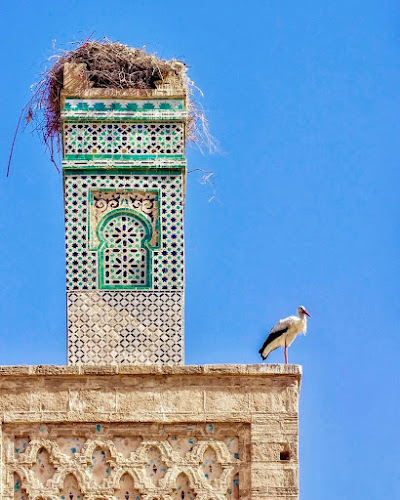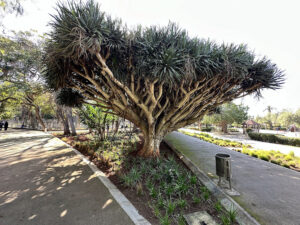
About Chellah
Description
The Chellah stands as one of Morocco's most captivating historical treasures, where ancient Roman ruins blend seamlessly with medieval Islamic architecture. I was absolutely blown away by this peaceful oasis when I first visited - it's honestly a welcome escape from Rabat's busy streets. The site carries layers of history, starting as a Roman settlement called Sala Colonia, later transformed into a Muslim necropolis by the Marinid dynasty.
What really struck me was how nature has reclaimed parts of the ruins. Wild flowers push through ancient stones, and storks have made their homes atop crumbling minarets. The combination of weathered stone walls, overgrown pathways, and those iconic stork nests creates an almost magical atmosphere that's pretty hard to put into words.
Key Features
- 14th-century entrance gate with intricate Islamic calligraphy
- Ancient Roman ruins including a forum and thermal baths
- Medieval mosque remains with a still-standing minaret
- Royal Marinid dynasty tombs and burial grounds
- Lush gardens with Mediterranean plants and flowers
- Natural spring considered sacred by locals
- Colony of white storks nesting on historic structures
- Stunning valley views from various vantage points
Best Time to Visit
From my experience, spring (March to May) is absolutely perfect for exploring the Chellah. The gardens burst with color, and the weather's just right - not too hot or crowded. Fall (September to November) comes in as a close second, with mild temperatures and fewer tourists.
I'd suggest avoiding midday visits during summer months (June-August) when temperatures can be brutal. Early mornings or late afternoons work best if you're visiting in summer. Winter can be lovely too, especially on sunny days, but watch out for occasional rain showers that might make the pathways slippery.
How to Get There
Getting to the Chellah is pretty straightforward. If you're staying in Rabat's city center, you can grab a petit taxi - that's what I usually do. The ride typically takes about 10 minutes, depending on traffic. Make sure to agree on the fare before setting off, or insist on using the meter.
For the more adventurous souls (like myself on good days), it's totally walkable from downtown Rabat. The 30-minute stroll takes you through interesting neighborhoods and gives you a better feel for the city. Just follow the signs or use your phone's GPS - it's pretty hard to miss the massive ancient walls once you're nearby.
Tips for Visiting
Okay, here's the inside scoop from someone who's been there multiple times: Wear comfortable shoes! Those ancient Roman pathways aren't exactly made for fancy footwear. I learned that the hard way on my first visit.
Bring a water bottle and maybe a hat - there's limited shade in some areas. The site's quite extensive, and you'll want to spend at least 2 hours exploring properly. Try to arrive early in the morning to catch the best light for photos and avoid the larger tour groups.
And here's something most guides won't tell you - bring some coins! The local cats near the entrance have become quite accustomed to visitors, and the area near the sacred pool is considered lucky by many locals. Some visitors toss coins while making wishes - it's become quite a tradition.
Photography enthusiasts should definitely pack their cameras - the contrast between the rugged ruins and delicate storks' nests makes for incredible shots. Just be respectful during prayer times if you're near the religious structures.
One last thing - consider hiring a guide at the entrance. Yeah, you can wander around on your own (like I did my first time), but the stories and historical details these folks share really bring the place to life. Trust me, it's worth the extra dirhams to truly understand what you're looking at.
Description
The Chellah stands as one of Morocco’s most captivating historical treasures, where ancient Roman ruins blend seamlessly with medieval Islamic architecture. I was absolutely blown away by this peaceful oasis when I first visited – it’s honestly a welcome escape from Rabat’s busy streets. The site carries layers of history, starting as a Roman settlement called Sala Colonia, later transformed into a Muslim necropolis by the Marinid dynasty.
What really struck me was how nature has reclaimed parts of the ruins. Wild flowers push through ancient stones, and storks have made their homes atop crumbling minarets. The combination of weathered stone walls, overgrown pathways, and those iconic stork nests creates an almost magical atmosphere that’s pretty hard to put into words.
Key Features
- 14th-century entrance gate with intricate Islamic calligraphy
- Ancient Roman ruins including a forum and thermal baths
- Medieval mosque remains with a still-standing minaret
- Royal Marinid dynasty tombs and burial grounds
- Lush gardens with Mediterranean plants and flowers
- Natural spring considered sacred by locals
- Colony of white storks nesting on historic structures
- Stunning valley views from various vantage points
Best Time to Visit
From my experience, spring (March to May) is absolutely perfect for exploring the Chellah. The gardens burst with color, and the weather’s just right – not too hot or crowded. Fall (September to November) comes in as a close second, with mild temperatures and fewer tourists.
I’d suggest avoiding midday visits during summer months (June-August) when temperatures can be brutal. Early mornings or late afternoons work best if you’re visiting in summer. Winter can be lovely too, especially on sunny days, but watch out for occasional rain showers that might make the pathways slippery.
How to Get There
Getting to the Chellah is pretty straightforward. If you’re staying in Rabat’s city center, you can grab a petit taxi – that’s what I usually do. The ride typically takes about 10 minutes, depending on traffic. Make sure to agree on the fare before setting off, or insist on using the meter.
For the more adventurous souls (like myself on good days), it’s totally walkable from downtown Rabat. The 30-minute stroll takes you through interesting neighborhoods and gives you a better feel for the city. Just follow the signs or use your phone’s GPS – it’s pretty hard to miss the massive ancient walls once you’re nearby.
Tips for Visiting
Okay, here’s the inside scoop from someone who’s been there multiple times: Wear comfortable shoes! Those ancient Roman pathways aren’t exactly made for fancy footwear. I learned that the hard way on my first visit.
Bring a water bottle and maybe a hat – there’s limited shade in some areas. The site’s quite extensive, and you’ll want to spend at least 2 hours exploring properly. Try to arrive early in the morning to catch the best light for photos and avoid the larger tour groups.
And here’s something most guides won’t tell you – bring some coins! The local cats near the entrance have become quite accustomed to visitors, and the area near the sacred pool is considered lucky by many locals. Some visitors toss coins while making wishes – it’s become quite a tradition.
Photography enthusiasts should definitely pack their cameras – the contrast between the rugged ruins and delicate storks’ nests makes for incredible shots. Just be respectful during prayer times if you’re near the religious structures.
One last thing – consider hiring a guide at the entrance. Yeah, you can wander around on your own (like I did my first time), but the stories and historical details these folks share really bring the place to life. Trust me, it’s worth the extra dirhams to truly understand what you’re looking at.
Location
Places to Stay Near Chellah
Find Tours in Rabat
Explore More Travel Guides
No reviews found! Be the first to review!


